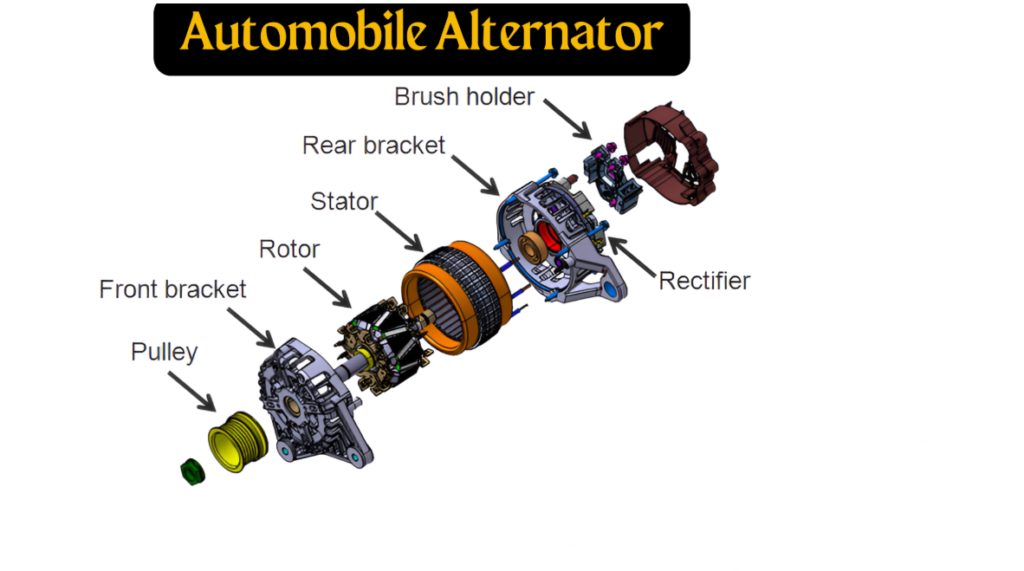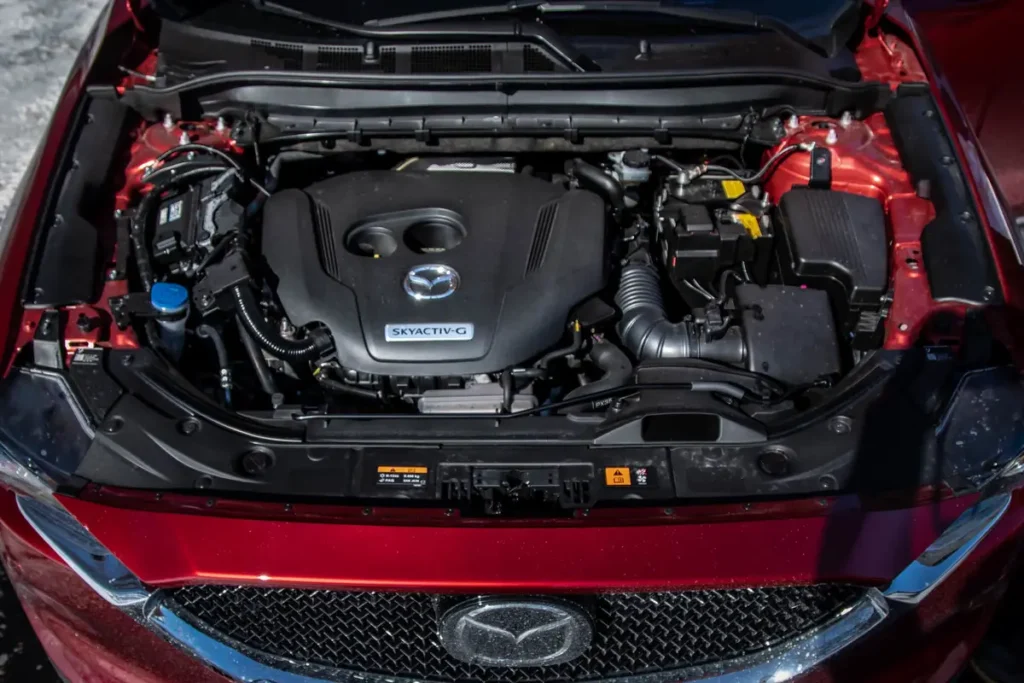Does Electric Cars Have Alternators? You’ve likely heard about the growing popularity of electric vehicles (EVs), but have you ever wondered how they work? Unlike traditional gas-powered vehicles, EVs rely on advanced electric car technology to get you moving.

One of the key differences between EVs and traditional vehicles is their charging system. While gas-powered cars use alternators to recharge their batteries, EVs have a different setup. Understanding the components of electric cars can help you appreciate the innovative technology behind these vehicles.
Key Takeaways
- Electric vehicles have a unique charging system that differs from traditional gas-powered cars.
- The technology behind EVs is constantly evolving.
- Understanding EV components can help you make informed decisions.
- EVs offer several benefits, including reduced environmental impact.
- As EV technology advances, we can expect to see even more efficient and reliable vehicles on the road.
Understanding Traditional Vehicle Charging Systems
Understanding how traditional vehicle charging systems work is essential for appreciating the differences between conventional and electric cars. Traditional vehicles rely on a complex system to keep their engines running and batteries charged.
How Alternators Work in Conventional Cars
In conventional cars, the alternator is the key component of the charging system. It converts mechanical energy from the engine into electrical energy, charging the battery and powering the car’s electrical systems. The alternator’s role is vital; without it, the battery would quickly drain, and the car would stall.
The Role of Batteries in Gas-Powered Vehicles
The battery in a gas-powered vehicle is essential for starting the engine. Once the engine is running, the alternator takes over, supplying power to the electrical systems and recharging the battery. The battery’s primary role is to provide the initial burst of energy needed to start the car.
Do Electric Cars Have Alternators?

As you explore the world of electric vehicles (EVs), you might wonder if they have alternators like traditional gasoline-powered cars. The answer lies in understanding the fundamental differences between electric and conventional vehicles.
The Simple Answer
No, electric cars do not have alternators in the traditional sense. Unlike gas-powered vehicles, EVs don’t require an alternator to charge their batteries.
Why Electric Vehicles Don’t Need Conventional Alternators
Electric vehicles are powered by electric motors, using energy stored in their battery packs. Since EVs don’t have an internal combustion engine, they don’t need an alternator to generate electricity. Their electric vehicle powertrain is designed to optimize energy efficiency, eliminating the need for traditional charging systems.
Regenerative Braking: The EV Alternative
So, how do electric cars recharge their batteries? They utilize regenerative braking, a technology that captures kinetic energy and converts it into electrical energy, which is then stored in the battery. This process not only recharges the battery but also helps to slow the vehicle, reducing wear on the brakes. Key benefits include:
- Increased energy efficiency
- Reduced brake wear
- Improved overall vehicle performance
Understanding the electric car charging system and its reliance on regenerative braking highlights the innovative technology behind EVs. As the automotive industry continues to evolve, it’s clear that electric vehicles are paving the way for a more sustainable future.
How Electric Cars Generate and Store Power
Understanding how electric cars generate and store power is crucial for appreciating the technology behind these vehicles. You might be familiar with the basics of electric vehicles (EVs), but delving deeper into their powertrains reveals a complex and efficient system.
Electric cars rely on advanced battery systems to store energy. These battery systems are designed to provide a reliable and efficient source of power. Most electric vehicles use lithium-ion batteries due to their high energy density and relatively long lifespan. The management of these batteries is critical, involving sophisticated systems to monitor and control factors like temperature, charge levels, and discharge rates.
Battery Systems in Electric Vehicles
The battery system is the heart of an electric car, determining its range, performance, and overall efficiency. Lithium-ion batteries are the current standard, offering a good balance between energy storage capacity and durability. The battery management system (BMS) plays a crucial role in maintaining the health of the battery pack, ensuring that it operates within safe limits.

Electric Motors and Power Inverters
Electric cars use electric motors to convert electrical energy into mechanical energy, propelling the vehicle forward. These motors are highly efficient and can provide instant torque, making EVs quick to accelerate. The power inverter is another critical component, responsible for converting DC power from the battery to AC power for the motor. This conversion process is essential for the efficient operation of the electric motor.
Charging Infrastructure and Maintenance Considerations
The charging infrastructure for electric cars is continually expanding, making it easier for you to charge your vehicle on the go. Maintenance considerations for EVs are generally lower than for traditional gasoline-powered cars, mainly because EVs have fewer moving parts. However, regular checks on the battery, electrical systems, and charging ports are essential to ensure the longevity of your electric vehicle.
By understanding the components and systems that make up an electric car’s powertrain, you can better appreciate the technology and make informed decisions about your next vehicle.
Understanding Electric Vehicles and Alternators
You now understand that electric cars don’t need conventional alternators like traditional vehicles. Instead, they rely on advanced technologies such as regenerative braking and sophisticated battery systems to generate and store power. The electric vehicles alternator system is essentially replaced by the electric motor and power inverter, which work together to propel the vehicle.
When comparing alternator vs electric motor, it’s clear that electric motors offer a more efficient and environmentally friendly solution for electric vehicles. As the demand for electric vehicles continues to grow, understanding these key differences is crucial for making informed decisions about your next vehicle.
By grasping the unique characteristics of electric vehicles, you can better appreciate the innovative technologies that power them. Whether you’re considering purchasing an electric vehicle or simply want to stay informed about the latest developments in the automotive industry, you now have a solid understanding of the key differences between electric and traditional vehicles.
FAQ
Do electric cars have alternators like traditional gas-powered vehicles?
Does Electric Cars Have Alternators? No, electric cars do not have alternators like traditional gas-powered vehicles. Instead, they use regenerative braking and electric motors to generate and store power.
How do electric cars generate power?
Electric cars generate power through their electric motors and regenerative braking systems, which capture kinetic energy and convert it into electrical energy to recharge the battery.
What is the role of the battery system in an electric vehicle?
The battery system in an electric vehicle stores electrical energy that powers the electric motor, allowing the vehicle to move. It is charged via an external power source, such as a charging station or wall socket.
How do electric cars maintain their battery health?
Electric cars maintain their battery health through proper charging habits, avoiding extreme temperatures, and regular maintenance checks. Some electric vehicles also have built-in battery management systems to optimize battery performance and longevity.
Can electric cars charge their batteries through regenerative braking alone?
While regenerative braking helps recharge the battery, it is not the sole means of charging. Electric cars need to be plugged into an external power source to fully charge their batteries.
What are the key components of an electric vehicle’s powertrain?
The key components of an electric vehicle’s powertrain include the electric motor, power inverter, battery system, and transmission (in some models). These components work together to convert electrical energy into mechanical energy, propelling the vehicle forward.
How does regenerative braking work in electric vehicles?
Regenerative braking in electric vehicles captures the kinetic energy generated by braking and converts it into electrical energy, which is then used to recharge the battery, improving overall efficiency and reducing wear on the brakes.




